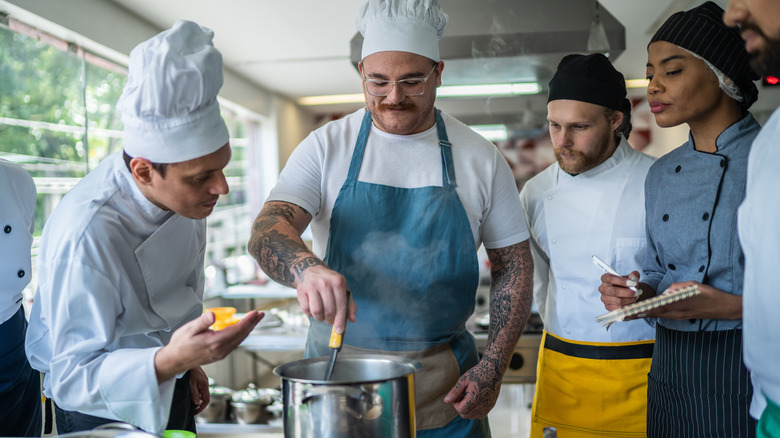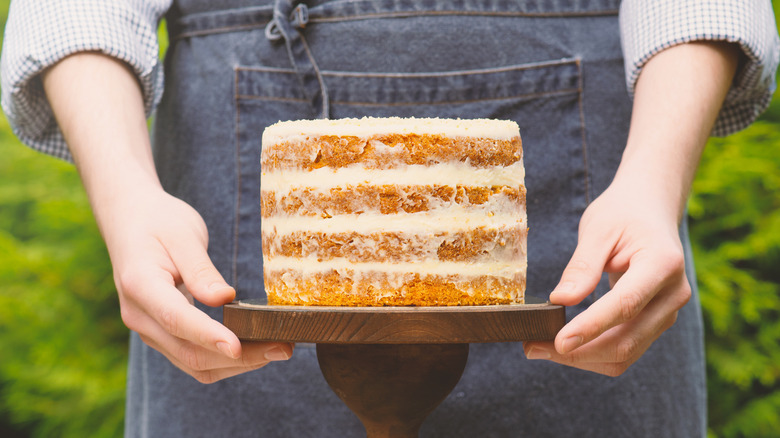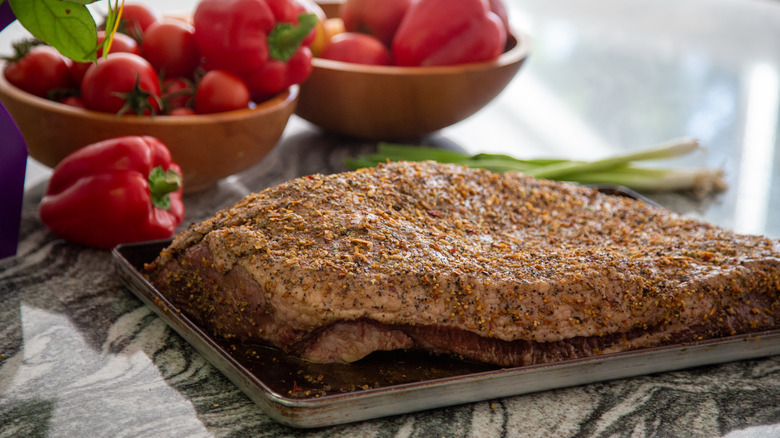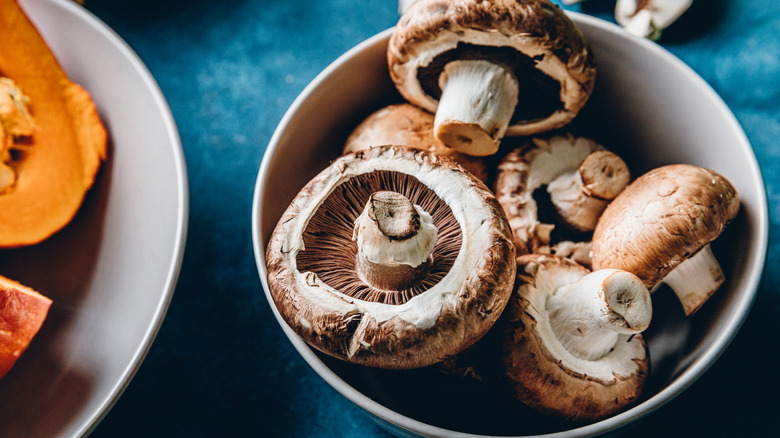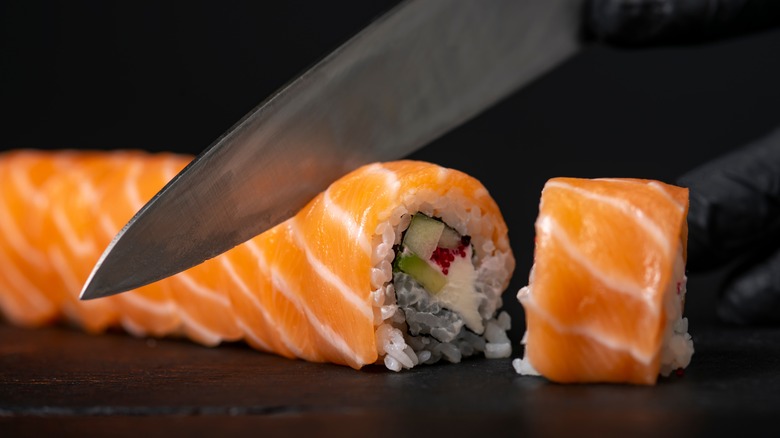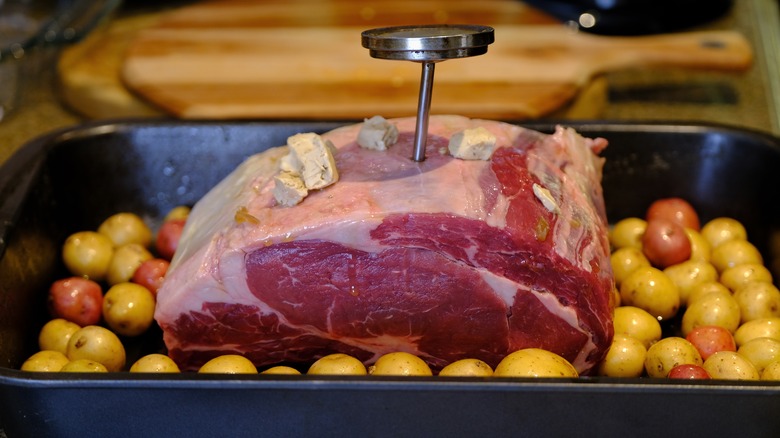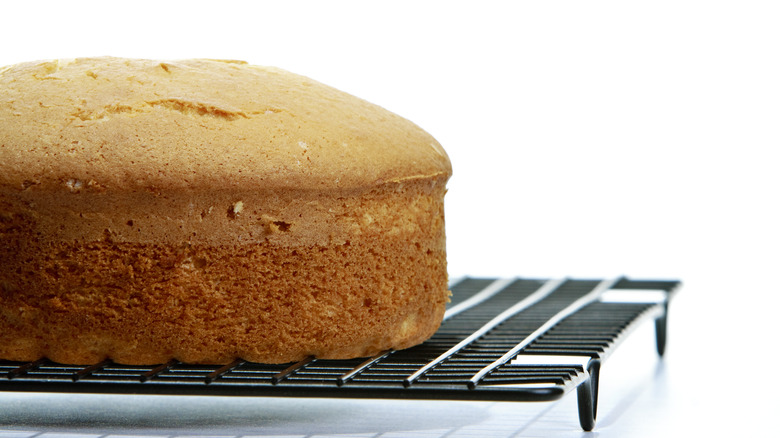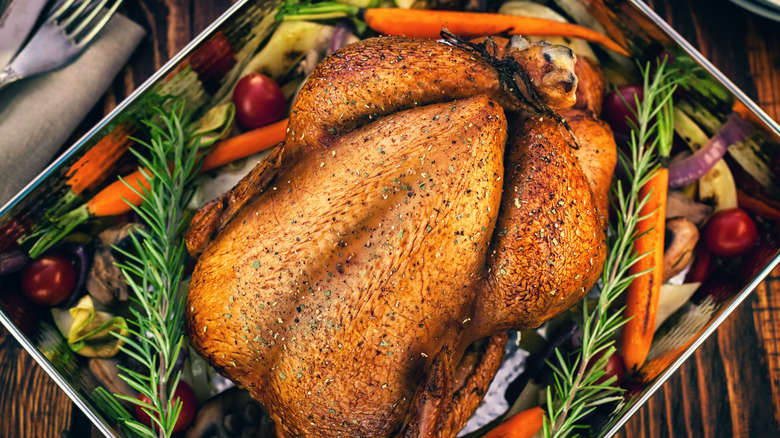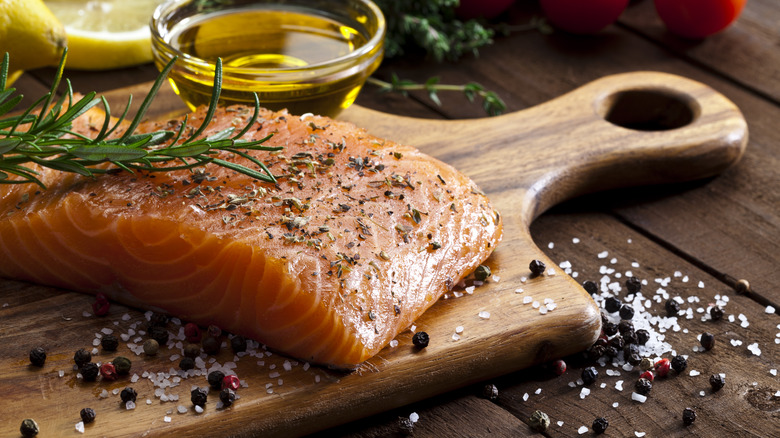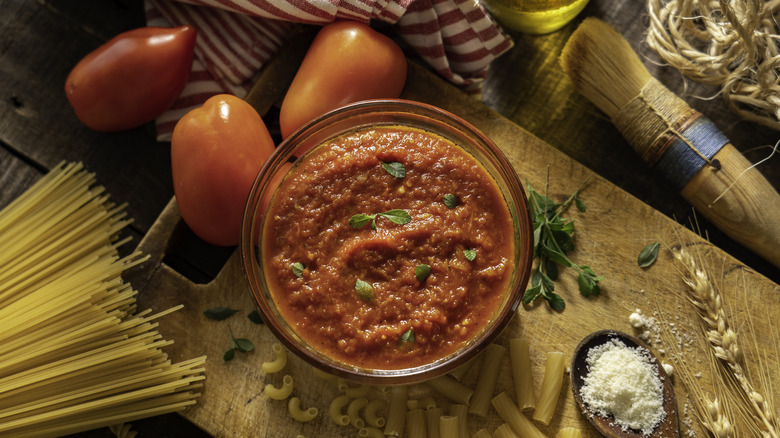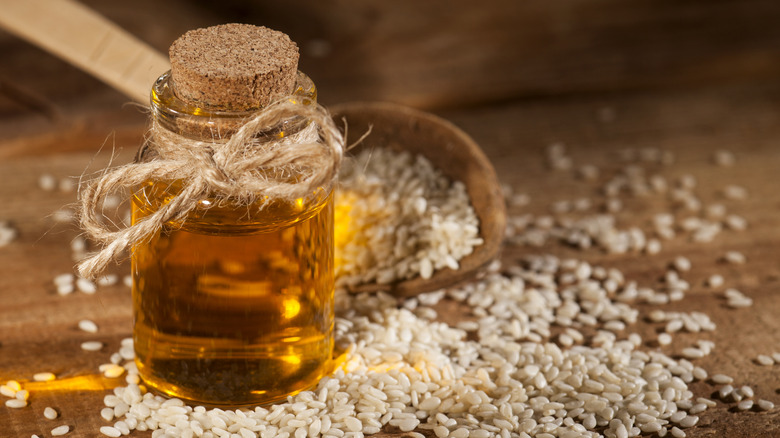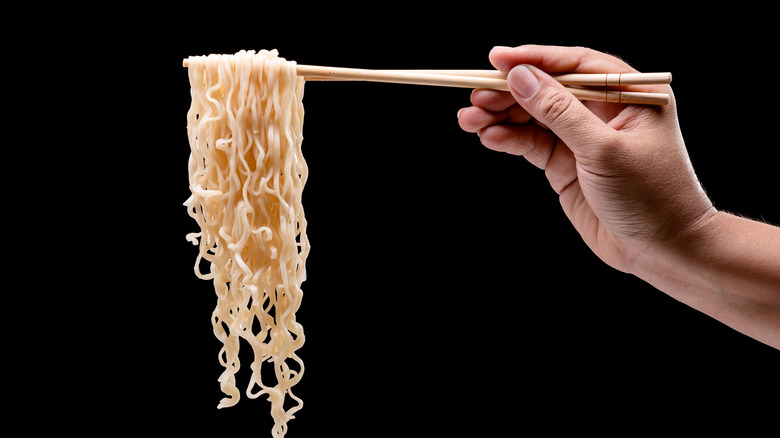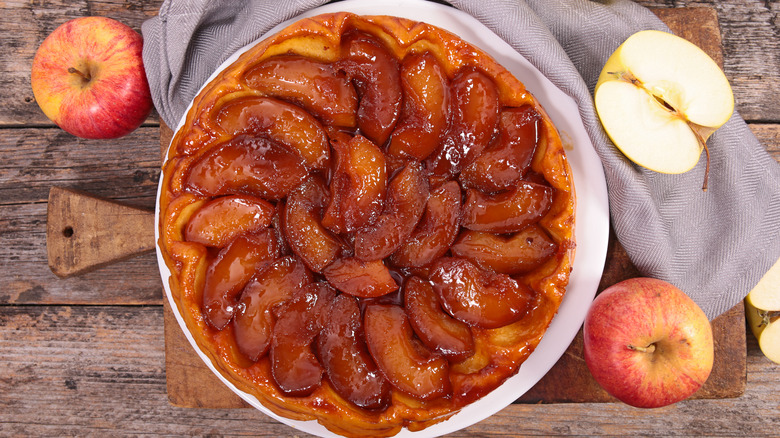The 12 Best Cooking Tips Celebrity Chefs Shared With Mashed In 2023
Picture the exhilaration of discovering a new hack, a technique that streamlines your cooking process, or an unexpected ingredient pairing that elevates a dish to new heights. Sounds like your cooking dreams come true, right? Well, from time-saving hacks to flavor-boosting secrets, some of the most influential celebrity chefs have generously shared a wave of clever cooking tips with Mashed this 2023, unraveling a treasure trove of kitchen wisdom that promises to transform the way you approach the art of cooking.
Each tip shared by these culinary maestros, revered for their unparalleled skills and creative flair, can serve as a suggestion for you, a home cook seeking to enhance your skills or infuse creativity into your daily meals. Read on to explore the depths of the culinary wisdom bestowed upon us by these renowned chefs as we unveil the best cooking tips from some of the most influential celebrity chefs of 2023, a journey that promises to revolutionize your approach to cooking and transform your kitchen into a playground of possibilities.
1. Christina Tosi uses acetate to build naked cakes
Christina Tosi, the brilliant pastry Chef and mastermind behind Milk Bar, graciously shared a game-changing tip for crafting the perfect naked cake. In the realm of baking, the naked cake has emerged as a way to flaunt a cake's layers of decadent goodness without the traditional coat of outer frosting. Ever the innovator, Tosi has revolutionized the process with a tool that transforms cake construction into a seamless art form: the humble acetate plastic sheet.
Per the exclusive interview with Mashed, Tosi explains that due to its flexibility, an acetate sheet is a perfect device for creating a "plastic collar of sorts," which provides just enough structural support to allow you to build a cake with as many layers of sponge and filling as you want so that you can get that decadence without the fuss. This simple yet ingenious method not only ensures a visually stunning cake but also emphasizes the simplicity of the naked cake. In the hands of Christina Tosi, the acetate sheet becomes a magic wand, proving that the world of dessert crafting can be both effortless and elegant. Just make sure to buy food-grade acetate if you want to give this trick a go.
2. Max Greb seasons his steak with a dry brine
Enter Max Greb (also known as Max the Meat Guy), whose culinary journey is fueled by an unbridled passion for all things meat. He discovered the joy of cooking when hosting weekend BBQs and has now evolved into a social media sensation, sharing his meat-centric expertise and tips across multiple social media platforms.
In the world of grilling, Max Greb imparts a game-changing piece of knowledge that has the potential to transform your backyard BBQ into a stage for culinary mastery. As he told Mashed in an exclusive interview, his secret to the perfectly seasoned steak lies in the art of dry brining. Unlike wet brining, which consists of soaking meat in salty water, Max explains that dry brining consists of pre-seasoning your meat a day before the sizzle, which results in significant advantages, both in developing a crust and retaining moisture. In essence, as the seasoning penetrates the meat, a transformative process occurs, enhancing the steak's flavor profile and ensuring a succulent, moist interior. While this means that you may need to plan ahead for your next meat-grilling sesh, the seemingly small effort of dry brining may become a game-changing step towards reaching grilling greatness.
3. Mark Strausman flavors his veggie broth with mushrooms
Chef Mark Strausman, the creative force behind Mark's Off Madison (M.O.M.), shared his secret for elevating the flavors of a simple vegetable broth via an exclusive interview with Mashed. Acknowledging that the foundation of any great soup is ample salt, Strausman emphasizes the crucial role of choosing the right vegetables, with mushrooms taking center stage, thus shedding light on the transformative power of this ingredient.
For him (and for numerous vegans and vegetarians), mushrooms are not mere vegetables; they are a robust substitute for meat, infusing the broth with a depth of flavor akin to chicken. But his mushroom secrets don't stop there, as Strausman suggests the interesting approach of combining fresh and dried mushrooms, seeing that the latter delivers an intensity that enhances the broth's overall taste. Plus, he offered another tip regarding mushroom integration, explaining that you should separate fresh and dried varieties as the key to unlocking maximum flavor without compromising texture. Per the Chef, fresh mushrooms are best cooked separately and introduced toward the end to preserve their integrity.
4. Masaharu Morimoto always uses a specialty knife when making sushi
While many American fans recognize him from his days on Iron Chef and Iron Chef America, Masaharu Morimoto is an esteemed Japanese chef whose influence extends far beyond television, with restaurants spanning the globe and mad sushi-making skills. In fact, in his exclusive interview with Mashed, Morimoto unveiled a crucial tip for the intricate art of crafting the perfect sushi roll: Always wield a specialty knife. According to the Chef, the choice of knives is paramount, and a dedicated sushi knife surpasses the capabilities of a multipurpose one.
Traditional Japanese kitchen knives, uniquely tailored for sushi and sashimi preparation, are designed to execute precise cuts essential for crafting perfect sushi. These knives are so specialized that they're often specific to different regions, and you may find up to six distinct types of knives whose use varies depending on the kind of fish. Plus, the demand for durability leads to the use of high-carbon steel, ensuring that these knives remain hard and resilient. In Morimoto's culinary domain, the specialty knife emerges as the unsung hero, and he highlights the importance of strength and razor-sharp edges in each instrument. Thus, in addition to using the right tool, Morimoto emphasizes the significance of keeping the knife impeccably sharp, recommending the use of a whetstone for precision.
5. David Rose has his mind on the temperature when cooking a prime rib
A distinguished personality on the Food Network and TV, a culinary content creator for special events, and the Executive Chef for Omaha Steaks, David Rose imparts a crucial lesson for those looking to get a perfectly cooked prime rib: Minding its temperature is the foundation for success. In an exclusive interview with Mashed, Rose cautioned against the rookie mistake of hastily transitioning the prime rib from the fridge to the oven. He advocates for patience and urges home cooks to allow the prime rib to sit at room temperature for at least an hour before cooking.
The reason, as Chef Rose explains, is to accelerate the center's journey to your desired temperature without compromising the outer sections of the ribs, ensuring a more uniform cooking process and minimizing moisture loss for a juicier outcome. But the temperature dance doesn't end with this helpful tip — seeing that, per the Chef, you should also be mindful of your target cooking temperature to know when to take your prime rib out of the oven or grill. According to Rose, you should always take into account carryover cooking, which is when the temperature of food keeps rising even after you remove it from the heat. Thus, he suggests taking your prime rib out of the oven or grill at 10 degrees lower than your desired cooking temperature to prevent the risk of veering into overcooked territory.
6. Prue Leith waits for cakes to cool down before decorating
In Prue Leith's culinary narrative, the act of waiting becomes a crucial ingredient in the recipe for success. Prue Leith, a judge on "The Great American Baking Show" and one of the UK's most celebrated restaurateurs, caterers, and TV cooks (via IMDb), reminds aspiring bakers that true cake artistry begins not just with the mixing and baking but with the patience to let the masterpiece cool, setting the stage for flawless decoration. Having witnessed the unfortunate fate of cakes that crumbled due to premature decorating, Leith warned in an exclusive interview with Mashed against the temptation to adorn a warm cake with chocolate, icing, or buttercream, which is a common mistake that leads to sliding decorations.
To make sure your cake is ready to hold its frosting and decor, you should give it a cooling period ranging from 10 minutes to a couple of hours, taking into account that different cakes demand distinct cooling times and practices. The site also recommends gently removing the warm cake from the pan after the said cooling period at room temperature to prevent the cake's bottom and sides from retaining excess warmth from the pan, and using a cooling wire rack to ensure optimal exposure to cool air.
7. Martha Stewart wraps her turkey in parchment paper to ensure a succulent result
Step into the world of culinary excellence with the sage advice of Martha Stewart, the iconic American entrepreneur and television personality. In the pursuit of a succulent roasted turkey, Stewart unveiled a game-changing tip via an exclusive interview with Mashed: the art of wrapping it in parchment.
Stewart's method begins after the turkey is already stuffed and slathered with butter. The next step involves wrapping the bird in a parchment paper cocoon, a technique that she describes as creating an "envelope." The parchment-wrapped turkey is then sealed with staples to ensure it stays covered during its transformative roasting process. Then, about half an hour before it's done, Stewart recommends unwrapping the turkey to let it roast to perfection. By following this out-of-the-box tip, you'll enjoy a masterpiece with crispy, golden-brown skin, and a juicy, flavorful interior. The genius of this method lies in its ability to seal in moisture and essence, ensuring that every bite is as succulent as can be.
8. Eric Ripert seasons salmon with salt and pepper
Best known for hosting the PBS show "Avec Eric" and his role as a discerning judge on "Top Chef," Eric Ripert is an internationally renowned chef specializing in modern French cuisine and seafood, and with his vast expertise, he did not hesitate to share with Mashed in an exclusive interview that the secret for elevating the flavor of salmon is to keep it simple when it comes to seasoning.
In his culinary philosophy, Ripert opts for a minimalist approach, relying solely on the classic combination of salt and pepper to enhance the natural flavors of seafood dishes like salmon. This advice is grounded in the recognition that the unassuming duo of salt and pepper allows the inherent identity of the salmon to shine through. Therefore, in a world where culinary artistry often involves complex combinations, Chef Eric Ripert's dedication to the fundamentals proves that sometimes, the most profound flavors arise from the simplest seasonings.
9. Marc Forgione boosts his spaghetti by using fresh ingredients
Marc Forgione is a renowned chef in the culinary world who not only clinched victory as an "Iron Chef" in 2010, but also became the youngest chef/owner in New York City to earn a Michelin star at just 30 years old. Guided by his farm-to-table mentality, Forgione revealed in an exclusive interview with Mashed a game-changing tip for elevating spaghetti: the power of relying on fresh ingredients.
In his culinary philosophy, Forgione emphasizes the importance of ditching canned ingredients and sauces (which, more often than not, provide excess sodium and other additives) for fresh, high-quality ingredients to enhance the flavor profile of this classic dish. While having a garden brimming with home-grown veggies is a dream for many, Forgione suggests practical tweaks that anyone can incorporate, including simple changes, such as using fresh herbs or crafting a homemade pasta sauce, which can make a significant difference. In Chef Marc Forgione's culinary narrative, the essence of freshness becomes a beacon, illuminating the path to a more elevated spaghetti experience that surpasses the ordinary.
10. David Chang always uses toasted sesame oil when cooking noodles
Chef David Chang is the culinary virtuoso behind the renowned Momofuku empire. Since the opening of his first restaurant, Momofuku Noodle Bar, Chef Chang has become the recipient of six James Beard Awards, a GQ Man of the Year, and a Time 100 List inclusion, solidifying his status as a culinary star, author, and influential figure. In his exclusive interview with Mashed, Chang shared his simple tip for elevating his noodle game, which revolved around a single key ingredient: toasted sesame oil. According to Chef Chang, incorporating toasted sesame oil unleashes a nuttier and more intense flavor profile, resulting in an exceptional finish when cooking noodles.
Moreover, the beauty of his advice lies in its simplicity, where a little goes a long way in transforming the dish, seeing that the magic happens with just a drop, advocating for a minimalist approach to achieve the best results. Per the chef, a single drop in a modest four-ounce bowl of noodles, combined with a hint of soy sauce, is the secret to unlocking a symphony of flavors.
11. Masaharu Morimoto lets his ramen noodle dough rest before cutting
Though it traces its origins back to China, ramen holds a revered place in Japanese cuisine. Characterized by its yellow noodles with a distinctive springy texture, ramen is known for its quintessential flavors manifest in various types of soup bases and noodles, including Shoyu, Miso, Tonkotsu, Ramyeon, and the ubiquitous Instant ramen. Yet, despite the worldwide popularity of the latter, famous Japanese Chef Masaharu Morimoto talks in an exclusive interview with Mashed about the art of ramen noodle-making and imparts a crucial tip for those venturing into the realm of homemade ramen.
According to Chef Morimoto, allowing the noodle dough to rest before cutting is essential in the delicate process of noodle preparation, highlighting the significance of patience and gluten formation. As explained in the chef's own words, "It is important for home cooks to let the noodle dough rest before cutting so that gluten can form and give the ramen the springy texture and chewiness it is known for."
12. Andrew Zimmern uses Red Delicious apples for his Tarte Tatin
Chef Andrew Zimmern, an Emmy-winning and four-time James Beard Award-winning TV personality, writer, and social justice advocate, loves a good Tarte Tatin — the classic French dessert made of pastry, apples, and caramel sauce. Thus, in an exclusive interview with Mashed, Zimmern unveiled a pro tip that centers on the hero of the dish: the apple. The chef emphasizes that the key to a successful Tarte Tatin lies in choosing the right apple varieties, seeing that picking the wrong kind can result in a disaster for his beloved dessert by making it overly soft during cooking.
To ensure the perfect balance of sweetness and structure, Zimmern recommends opting for robust baking apples like Haralsons or Cortlands. However, he introduces a surprising contender: the Red Delicious apple. "I've tested it with Red Delicious. It works perfectly," Zimmern declared. Despite the Red Delicious apple not being renowned for its taste, it withstands the cooking process required to craft a Tarte Tatin. Plus, when combined with the caramel and pastry components, the Red Delicious apple adds sufficient flavor to create a seamless and impeccable dessert. In the world of Andrew Zimmern's culinary wisdom, the controversial choice of apple can become the secret ingredient that elevates Tarte Tatin from a classic to a masterpiece.
